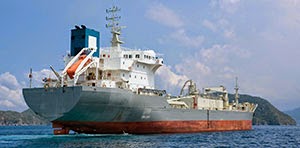Hi Regional Economic News Focus - Middle East & African Investors - Egypt.
.jpg)
.jpg)
.jpg)
.jpg)
.jpg)
Citadel Capital bullish on Egypt’s return to growth
Citadel Capital Click Here to visit company web site, a major investment company in Africa and the Middle East with $9.5 billion in investments under control, was a key participant at the Egypt GCC Investment Forum Click Here to visit organizers web site for details, a two-day event hosted by the Egyptian Ministry of Investment in partnership with the UAE and Euro money Conferences.
.jpg)
"President Adly Mansour"
"President Adly Mansour received Thursday in the presidential palace a delegation from the Gulf-Egyptian investment forum, currently held in Cairo under the rubric "A Strategic Partnership and Economic Integrity." The forum is held under the auspices of Egypt and the United Arab Emirates (UAE)."
.jpg)
Investor
The event brings together top-tier Egyptian and GCC private sector investors, financiers and leading government officials from Egypt and the GCC to discuss strategic partnerships and new investment opportunities in Egypt as the government attempts to jump-start the economy and capitalize on rising investor confidence.
.jpg)
Strategic Partnerships & New investment Opportunities.
“Egypt has always had an economy that has the capacity to absorb investments and we as a country have always been able to find the right track. Granted, there may be heartache and frustration along the way, but when all is said and done, Egypt has always done the right thing. Right now Egypt needs investments. In order to achieve a growth rate of 7 percent, we need $20-$25 billion in new investments,” said Citadel Capital Founder and Chairman Ahmed Heikal during a keynote interview at the forum.
.jpg)
.jpg)
Economic Growth
“In this context, two things are clear: We enjoy immense support from the Gulf countries not just in budget support and direct aid to the government, but from companies and countries with a genuine interest in helping Egypt build its infrastructure base. Secondly, I believe it is patently obvious that energy policy is at the root of our macro challenges today. The simple fact is that had increased the price of petroleum products by 17 piasters per annul starting in 2000, the total debt of the Egyptian government today would have been zero,” he said.
Heikal pointed out that the startling statistic underscores the necessity of adopting a much more aggressive strategy as regards energy pricing.
.jpg)
New Strategic Possibilities
“People are now aware of the problem — and that’s the first part of finding a solution. But talking isn't enough: Now is the time for implementing solutions. The funding that we have received from the Gulf States has allowed us to avoid major problems, this does not however change the fact that we cannot continue to ignore the impending crisis that will occur once this funding is discontinued. Energy prices need to be liberalized gradually lest we wish to see a spike in inflation at the same time as we face rising unemployment as a result of failing enterprises. With that in mind, we need to cushion the impact of price rises through a system of direct cash subsidies to consumers,” added Heikal.
.jpg)
Consumer Subsidies
Asked about the concerns of GCC investors — such as the legal environment and whether or not the current regulatory framework can ensure the safety of their investments — Heikal pointed out that “despite the uncertainty and the very real problems that are delaying the completion of projects in the interim, the risk-reward relationship is still very favorable in Egypt.”
.jpg)
.jpg)
Egypt
Heikal added: “I think that the lack of resolution on the political front and the bureaucratic delays have without a doubt hampered Egypt’s capacity to attract new investment, but GCC investors are still finding it worthwhile to invest in Egypt. There are still excellent opportunities out there for large deals in key sectors such as energy and infrastructure that have attracted and will continue to attract large amounts of capital coming from the Gulf.”
.jpg)
.jpg)
Egypt's Capital
A case in point is Citadel Capital’s Egyptian Refining Company (ERC), a $3.7 billion second stage oil refinery that will reduce Egypt’s present day diesel imports by more than half, generate more than $300 million in annual benefits to the state treasury, and reduce by nearly one-third the country’s present sulfur dioxide emissions. The financing package for ERC, one of the largest-ever project finance deals in Africa, was completed post revolution with an international pool of investors that included Gulf-based sovereign wealth funds.
.jpg)
.jpg)
Oil Refinery
Asked what advice he would give to the government, Heikal noted that a shield law for government officials who are taking legitimate decisions that are discretionary in nature is a must to avoid bureaucratic inertia.
He also added that additional institutional capacity was required. “We need to be able to attract higher calibers in the government and we also need to raise the productivity of the Egyptian economy as a whole, which means enacting policies regarding the types of investments we want to encourage bearing in mind energy, water and electricity consumption,” said Heikal.
.jpg)
.jpg)
Outlook
Citadel Capital also participated in two targeted sector workshops on renewable energy and hydrocarbons that featured government ministers and industry experts. Leading the discussion on hydrocarbons was Citadel Capital Managing Director for Energy Investments Mohamed Shoeib who highlighted the importance of future cooperation between the government and private sector investors in the hydrocarbons sector.
Energy
“To keep pace with projected economic growth and provide much needed energy capacity in the region Citadel Capital has invested heavily in energy as one of its five core industries. Our integrated energy investments cover the full value chain and include refining, energy distribution, power generation and alternative fuels,” said Shoeib, an industry veteran with over 30 years experience in the upstream and downstream oil and gas sector in Egypt.
.jpg)
.jpg)
Opportunity
Khaled Abu Bakr, executive chairman of Citadel Capital’s energy distribution platform, TAQA Arabia, participated in a workshop that discussed the role of renewable energy in sustainable development and explored the policy and regulatory framework that is required in order to facilitate and encourage more investments of this nature, which will be crucial for Egypt’s energy security going forward.
.jpg)
.jpg)
Framework
TAQA Arabia is the largest private sector energy distribution company in Egypt with over 16 years of experience, investing and operating energy infrastructure including gas transmission and distribution through its largest operational arm, TAQA Gas. As part of it’s ongoing effort to grow the energy sector in Egypt and meet increasing domestic demand, TAQA Arabia recently entered into an agreement with the Egyptian Ministry of Petroleum and Natural Resources to connect 66,000 homes with natural gas.
Development
The growth of Citadel Capital’s energy investment comes as the firm continues its transformation of its business model from a private equity firm to Africa’s leading investment company. Energy is one of Citadel Capital’s five core industries alongside transportation, agriculture agrifoods, mining, and cement.
.jpg)
.jpg)
Triumph
Egypt's GCC Investment Forum Further Information Links;
The Egypt/GCC Investment Forum Agenda - English Click Here to download.
The Egypt/GCC Investment Forum Agenda - Arabic Click Here to download.
*The original publication referenced from was briefly edited & remains to be the main source of this publication article. The source of this article is published by Arab news & you may click here to visit the site & view the original article source. 
.jpg)
.jpg)
.jpg)
.jpg)



.jpg)
.jpg)
.jpg)
.jpg)
.jpg)


.jpg)

.jpg)
.jpg)
.jpg)
.jpg)
.jpg)
.jpg)

.jpg)
.jpg)
.jpg)
.jpg)
.jpg)
.jpg)
.jpg)
.jpg)
.jpg)
.jpg)




